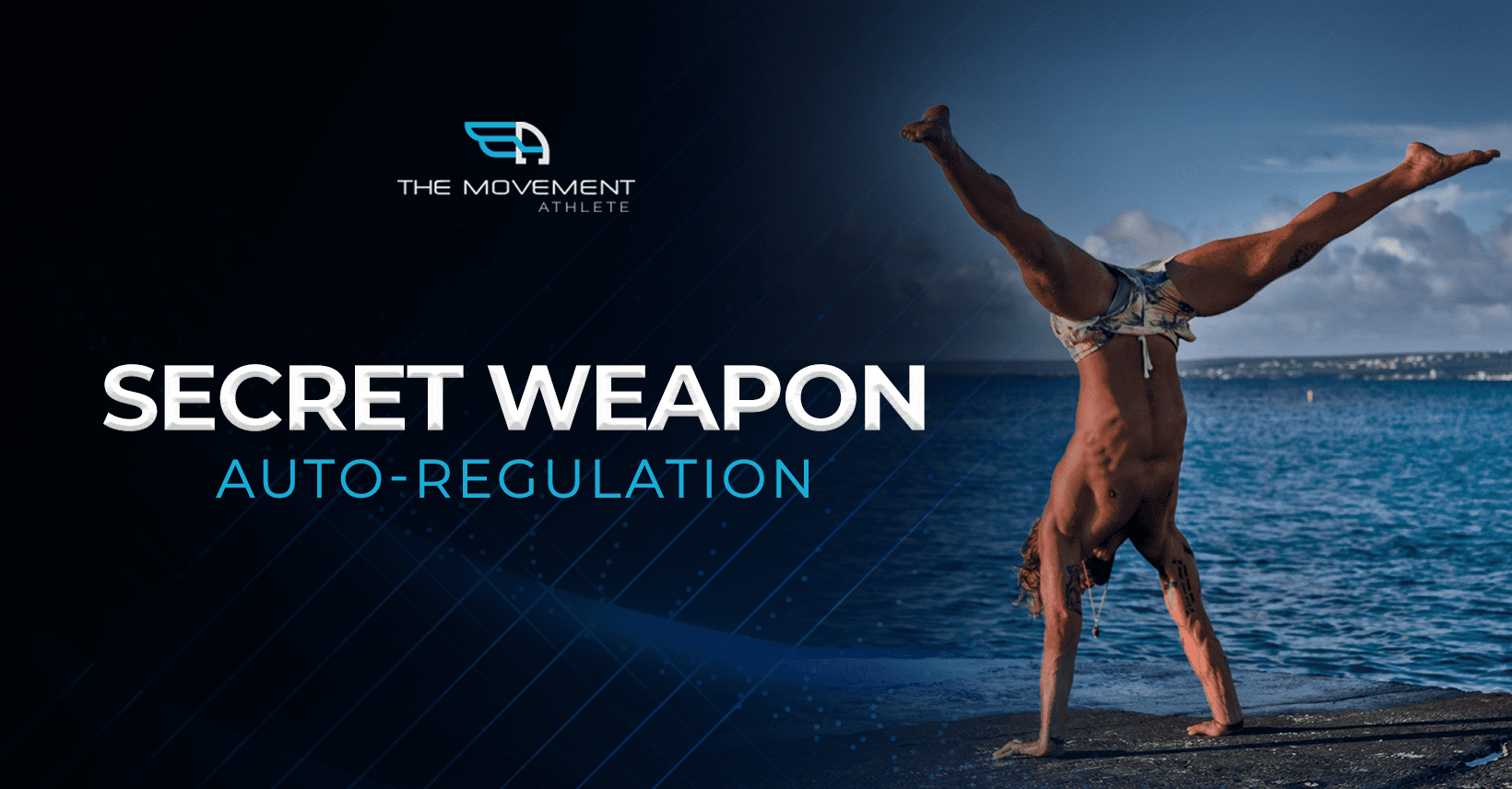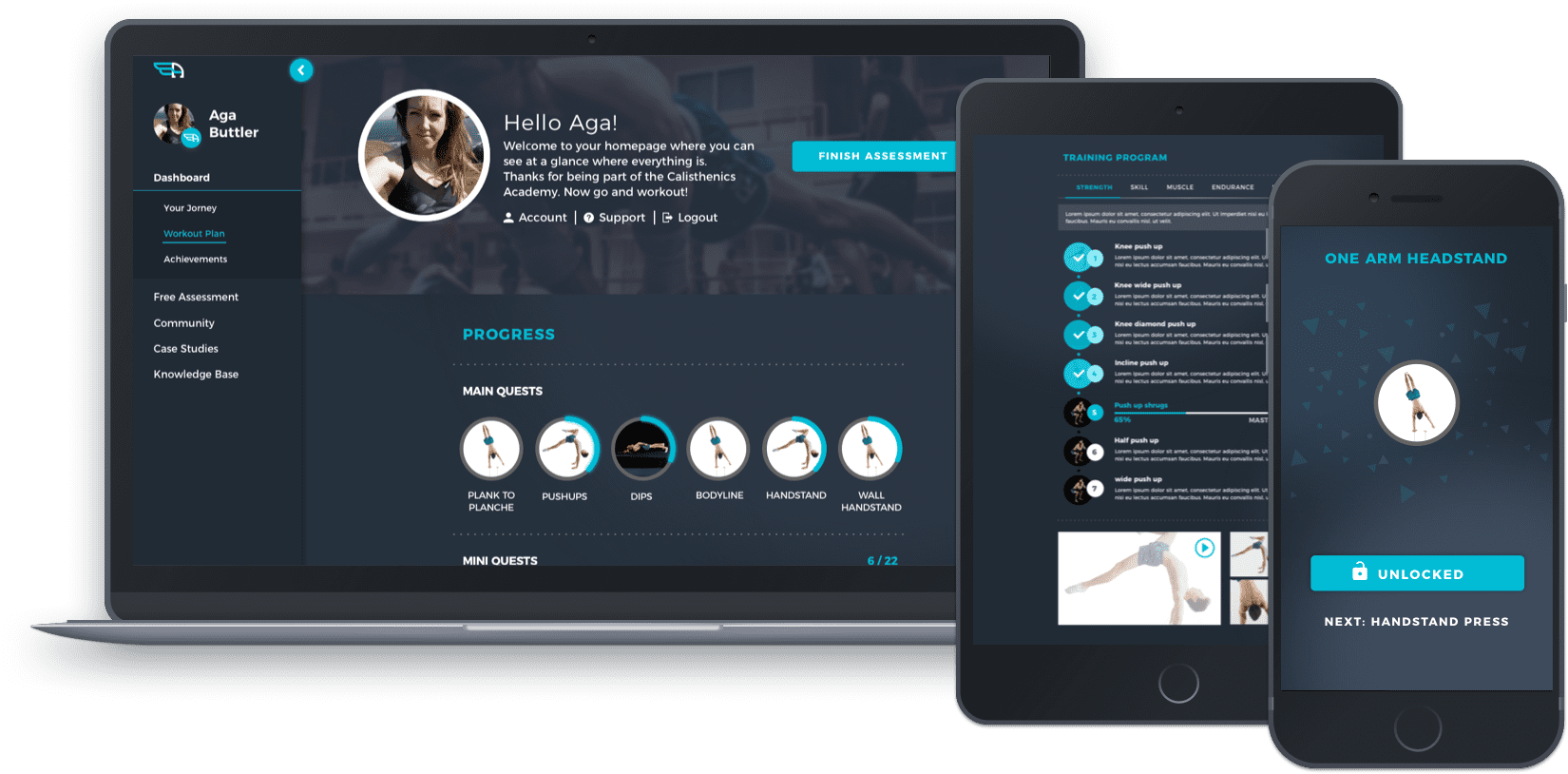
SECRET WEAPON #1. AUTOREGULATION
Adapt to your changing needs to train productively for the rest of your life.
It’s not that difficult to push yourself for a few weeks and make a lot of improvement.
But it isn’t any good if you stop after that, which is what most of the people do.
The only sustainable way to include training in your life for good is to think
The truth is that there are many variables affecting your training.
Sleep, emotional stress, illness, work, energy levels, and diet all significantly influence training.
There are days when you feel great and on the top of the world and you just power through your workout. Other days you might be feeling really bad. Some weeks are amazing, some are miserable.
And unfortunately, there are too many variables to predict and plot how you’ll be performing on a specific day to then schedule the right kind of workout.
The old school of thought would say that you just need to push through it and train, but the truth is that these are real variables. Instead of fighting against them, you should work with them to make your training more effective.
How can you do that, you ask?
By using a fancy strategy called autoregulatory training.
👉Auto-Regulatory Training
It just means changing how you set up your workout session. Auto-Regulatory Training (AT) uses your current performance in comparison to past sessions to help you make intelligent changes to your program. It takes how you’re feeling as well as actual progress into account to help you plan your next session.
AT wants to help athletes find the balance between the stress of training to actual readiness. It’s designed to help individuals workout according to their changing needs so that the training remains regular and consistent.
For example, the difficulty of a workout can vary greatly based on the athlete’s recovery, rather than the actual physical challenge of the routine. It allows the athlete to build their own workout based on their recovery in addition to their progress. It’s an amazing tool that has been proven to accelerate strength rehabilitation more efficiently than traditional methods.
AT believes that the athlete knows their needs best. Their awareness can then be used to program their overall program, which will greatly improve performance and progress.
So how do we rate this readiness?
👊Auto-Regulatory Training IN REAL LIFE
In an ideal world, you’d optimize your training sessions by adjusting your sets, reps, and intensity based on how hard is to perform the exercise in your current session.
In practice, that’d mean that the coach would give you a number of sets and reps to perform. S/he’d ask after each round or even each exercise how that felt and adjust based on your answer.
Here’s how we translate that for you to use to autoregulate your current or next session: ever heard of Rating of Perceived Exertion?
🤜Rating of Perceived Exertion (RPE)
It’s a scale we use to help AT by being aware of the level of effort and exertion you put into your exercise.
Here’s how it goes:
RPE, also called “The Borg Rating Scale of Perceived Exertion” was developed by Gunnar Borg (surprise, surprise) in the early 1980s. It was first used to gauge aerobic training, but soon became a tool to clinically analyze breathlessness and dyspnea, chest pain, angina, and
Overall, it’s a reliable tool for you to track your day-to-day training and how it compares to
🔥 Introducing the Latest Movement Athlete Scale
If you read the first version of our ebook, you know that we were using a 3-point scale to adjust the sets and reps. After a year of training athletes, we changed that to the 5-point scale. The smaller scale simply wasn’t giving us enough data, but we still needed a simple version of the RPE.
This is a really important part of the training routine and it will work magic to help you with your progress. It’ll also help you build awareness of your body and take your training to the next level.

So after every single exercise you do, we’ll ask, “How hard was it to complete that set of reps?” and adjust your next set based on your feedback.
Check out the Programming chapter to find out how to use the RPE in your DIY program.
🤔WHY IS AUTOREGULATION A GAME-CHANGER?
With AT, all you need to do is get your workout started rather than try to predict how it’ll go beforehand.
This also means that no matter how you feel, the workout is always enjoyable.
What kind of difference would that make for your mindset knowing that every workout, no matter how you feel, is good and it’s moving you one step closer to your goals?
I let go of my expectations and just took my training one day at a time. I took it all in stride, the good and the bad alike. I stopped overthinking and worrying, and it’s helped me stick to my training whether it felt satisfying or not. Whether I felt like it was a good workout or not. Whether I was in the right mindset that day or not.
This is the key to lifelong training.
What would it feel like to never have to give up on another fitness program again?
The truth is that you showing up, aware of how your body’s feeling and adjusting based on that, will give you more gains long term than you’d expect.
Also, how amazing would it be to have the most effective training ever, just because you’re listening to your body’s needs?
No more feelings of disappointment or like you’re not moving forward. You always are.